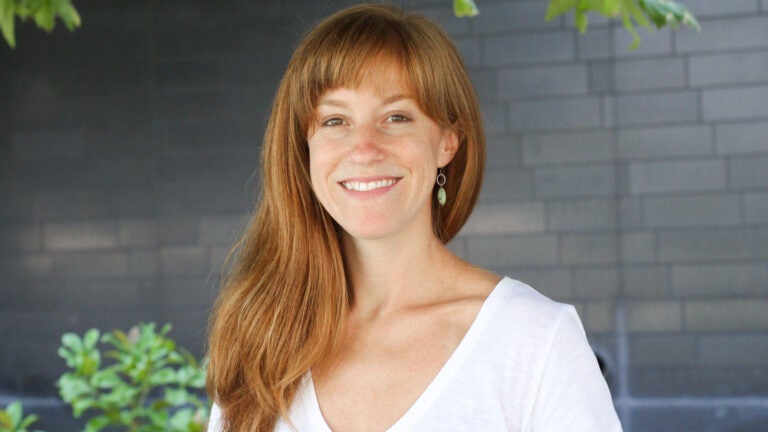
Connecticut native Lindsey Barske began her collegiate research on the Alaskan tundra. (Photo/Cristy Lytal)
USC Stem Cell scientist reaches a turning point
NIH Pathway to Independence Award will help Lindsey Barske transition to the faculty stage as she hopes to learn more about human birth defects
Years ago, Lindsey Barske pulled on a pair of tall rubber boots and began a journey that led from her college research experience on the muddy Alaskan tundra to her current postdoctoral studies in the USC Stem Cell lab of Gage Crump.
Now she’s arrived at a key turning point, having received a National Institutes of Health Pathway to Independence Award (K99/R00) to help her transition from postdoc to the faculty stage of her career. As the recipient of this nationally competitive award, she will study facial development in zebrafish and mice, in hopes of better understanding human birth defects ranging from cleft palate to prematurely fused skull sutures.
After a childhood spent in a town of 7,000 people in the so-called “Quiet Corner” of Connecticut, Barske pursued a biology major at Pomona College. For two summers, she studied with an ecological research team working on Alaska’s North Slope. Squishing across the sponge-like ground between tall tussocks of grass in a land of permafrost, caribou and grizzlies, she knew that science was her calling.
“My time in Alaska showed me how fun and creative and dedicated real scientists are,” she said. “I felt that I had found my tribe.”
Biology and evolution
She then explored different aspects of biology during two technician jobs: first in the cancer epigenetics lab of Peter Jones at the USC Norris Comprehensive Cancer Center and then in the developmental biology lab of Alvaro Sagasti at UCLA.
I love embryos. The details of their development are so elegant and mind boggling.
Lindsey Barske
“I love embryos,” she said. “The details of their development are so elegant and mindboggling, but completely underappreciated by most people. There seems to be no end to how much they can teach us about our own biology and evolution.”
She went on to obtain her PhD in developmental biology and embryology from Duke University, where she performed research on the sex determination and ovary development in mice and turtles in the laboratory of Blanche Capel. During these years, Barske published five first-author manuscripts and three review articles in top scientific journals, including Nature and Developmental Biology.
She has time and support
Her NIH Pathway to Independence Award project will focus on how two groups of genes, Fibroblast Growth Factor 20 and the Nuclear Receptor 2f family, restrict the maturation of skeletal progenitors in the developing facial skeleton in both zebrafish and mice — and the implications for other species, including humans.
“I want to devote my career to an exploration of the developmental mechanisms that sculpt the skull and, when disrupted, lead to craniofacial malformations in human patients,” Barske said. “This K99/R00 award will offer me time and financial support to acquire essential training in mammalian craniofacial biology, a critical component of my envisioned independent research program, before moving on from the very supportive and creative craniofacial and skeletal biology community at USC.”
As Barske continues her scientific journey, she is open to pulling on her rubber boots and following the science wherever it takes her.
“There’s nothing so motivating to me as the drive to find answers to questions in development biology — it can be so exciting when you finally figure out something that’s been driving you bonkers for months,” she said. “I’m fortunate in that the rapid pace of zebrafish work means that I get to experience that feeling more often than many researchers, and it pushes me to jump straight to the next question that inevitably arises from the answer to the first. I love what I do, and I want to keep being a scientist as long as I can. It’s a privilege to get to do this.”
Go into the lab with Lindsey Barske in this video



